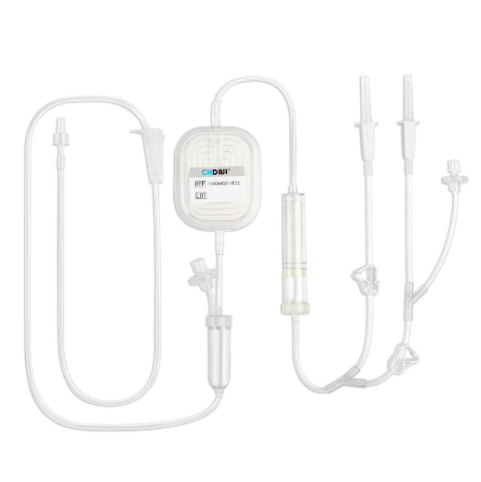What Are Bedside Leucocyte Reduction Filters for Red Blood Cells?
Bedside Leucocyte Reduction Filters for red blood cells (RBCs) are critical devices used to enhance patient safety during blood transfusions. These filters efficiently remove white blood cells (WBCs) and other potentially harmful elements from RBCs, reducing the risk of adverse transfusion reactions. This article delves into the features, functionality, and benefits of various bedside filters available in the market.
What Are Bedside Leucocyte Reduction Filters for Red Blood Cells?
Bedside Leucocyte Reduction filters for RBCs are specialized medical devices designed to reduce leukocyte (white blood cell) contamination in blood products. By eliminating WBCs, these filters help prevent immunological complications, including febrile non-hemolytic transfusion reactions (FNHTRs), alloimmunization, and the transmission of leukocyte-associated viruses.
Key Features of RBC Bedside Filters
Modern bedside filters come with distinct features that cater to diverse clinical needs. These include:
1. Leukoreduction Capability
Filters efficiently remove leukocytes, ensuring safer transfusions.
2. Micron-Specific Filtration
Standard bedside filters have a pore size of 200±20um, capable of trapping clots, cellular aggregates, and debris.
3. Ease of Use
Many models feature user-friendly designs, such as pre-attached tubing, drip chambers, and quick priming systems.
Importance of Blood Set Filters in Transfusions
All blood components, including RBCs, require administration through tubing equipped with a filter. These filters are indispensable for:
1. Preventing Micro-Emboli
They trap cellular aggregates and debris that could cause blockages in microvasculature.
2. Enhancing Patient Safety
By removing clots and foreign particles, filters minimize the risk of transfusion-related complications.
3. Adapting to Specialized Needs
Specialty filters cater to patients with unique clinical requirements, ensuring optimal outcomes.
Choosing the Right Bedside Filter
When selecting a bedside filter for RBCs, healthcare providers must consider:
1. 100% micro aggregate removal
The standard size (200±20um) suffices for most scenarios, but specialty filters might be needed for high-risk cases.
2. Compatibility
Filters must seamlessly integrate with existing transfusion setups, including storage bags and administration tubing.
3. Priming Efficiency
Filters that prime quickly save valuable time in emergency situations.
4. Clinical Context
Factors such as patient history, immunological status, and the type of blood product being transfused influence filter selection.
Advancements in Bedside Filter Technology
The field of bedside filtration continues to evolve, with innovations aimed at improving efficiency, reducing costs, and enhancing patient safety. Modern filters boast:
- Improved Leukocyte Retention Rates
Advanced materials and designs ensure superior leukoreduction.
- Reduced Hemolysis Risk
Filters now preserve the integrity of RBCs more effectively, ensuring therapeutic efficacy.
- Enhanced User Convenience
Compact, disposable designs streamline the transfusion process.
Clinical Benefits of Bedside Filters
The use of bedside filters provides numerous advantages, including:
1. Reduced Risk of Febrile Reactions
By removing leukocytes, filters minimize inflammatory responses during transfusions.
2. Lowered Alloimmunization Incidence
WBC removal decreases the likelihood of antibody formation against donor antigens.
3. Improved Patient Outcomes
Fewer complications lead to shorter hospital stays and better overall recovery.
Technological Advancements in Bedside RBC Filters
The development of bedside RBC filters has been enhanced by modern medical technology. These advancements have led to filters that are more efficient, easy to use, and provide higher levels of filtration.
Smarter Filter Designs
New filter designs now offer advanced features, such as:
- Higher Filtration Capacity: Modern filters are designed to handle larger volumes of blood at a faster rate, making them more effective in emergency situations.
- Multifunctional Filters: Some filters are now capable of removing white blood cells, platelets, and other cellular components, offering an additional layer of protection against transfusion complications.
Increased Biocompatibility
Recent advancements in materials science have made RBC filters more biocompatible. This reduces the likelihood of allergic reactions or other complications related to the filter material itself. The use of polymer-based membranes is common due to their high degree of compatibility with blood.
Integration with Blood Transfusion Systems
Many of the latest bedside RBC filters are designed to integrate seamlessly into automated blood transfusion systems, making the entire process more streamlined and efficient.
Conclusion
Bedside filters for RBCs are indispensable tools in modern transfusion medicine, enhancing the safety and efficacy of blood administration. Selecting the right filter ensures optimal patient outcomes and underscores the importance of precision in medical care.


Comments